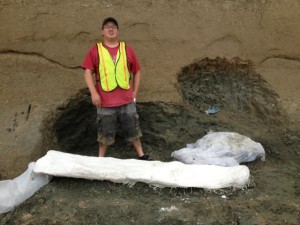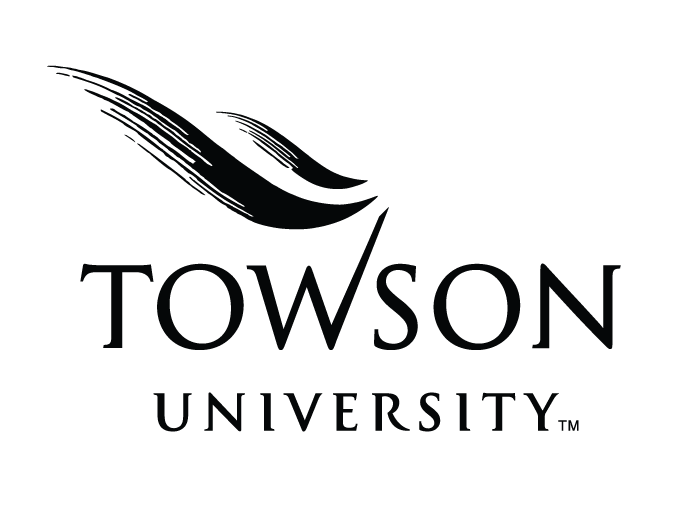We recently sat down with Donald Morgan, a Towson University senior majoring in biology. Morgan—an aspiring paleontologist—recently completed an internship with the Calvert Marine Museum, where he had the opportunity to work on a dig in the field. There, he unearthed more than just bones.
What attracts you to paleontology?
I’ve liked paleontology ever since I was a kid—I was obsessed with dinosaurs and wanted to know everything about them. I gradually picked up paleontology as what I wanted to do when I found the animals that were extinct were more fascinating to me than the ones still around. There’s a lot we don’t know about the evolution of different lineages, and trying to complete the puzzle of where we are today intrigues me.
What made you decide to come to Towson?
I liked the size of the classes at Towson and thought the biology department was strong. My adviser, Richard Seigel, has been very influential in my time here, referring me to the biology track and showing me what it means to be a biologist.
How did you get your internship with the Calvert Marine Museum, and what was the work like?

Donald Morgan, on the Stratford site, standing beside the jacket containing the bottom jaws of the whale
As a member of the fossil club at the museum, I knew Dr. Stephen Godfrey there. I emailed him enough times that when he had an internship opening I luckily got picked. My responsibilities were to work in the lab, preparing fossils for display and for archiving, and to assist in field work, mostly at a site in Stratford, Va.
The field work was everything I dreamed it would be, a lot of hands-on digging and uncovering bones. What we found in Stratford was an approximately 15 million-year-old baleen whale from the Miocene epoch, approximately 25 feet in length. We’re not sure of the species yet but we think it belongs to Cetotheriidae, the only living member of which is the recently discovered pygmy right whale. The major attraction piece in this dig was the skull, which was about six feet in length and took a long time to uncover. We were out there from the beginning of June until about mid-August, trying to dig it out.
Why is the Stratford site important?
Stratford Hall rarely allows fossil hunters onto their beach, so the fossils there are largely undescribed and they have a good quality and quantity of fossils. The whale may not turn out to be a new species or an important find, but it’s always interesting to find a large, mostly complete skeleton. It could be the most complete skull of this species that we’ve described and have features we don’t even know about.
It’s going to take months to get the skull prepared because we really have to be careful, digging with dental tools to get all the layers of matrix away from the bone. But it’s definitely worth it. The skull is actually out in the exhibits hall, so if you go to the Calvert Marine Museum you can watch people working on the skull. We get a lot of little kids enthralled by watching. As a kid, I would have loved that!
What advice would you give to students with an interest in paleontology or archaeology?
The main thing is that if you love it you’ve got to do it. You can make a decent living being an archaeologist or a paleontologist, it just depends on how bad you want it. Do your homework, do well in school. Try and stay focused and get involved in different local museums. Start emailing people to ask if you can help—it works and you make connections. At Stratford Hall they have I think three archaeology programs that were taking volunteers from universities and high schools to work on historical sites. And there are fossil sites all up and down the east coast. So it’s out there, you just have to keep digging.
Related:
- Ancient whale emerges bone by bone along the Potomac (Washington Post)
